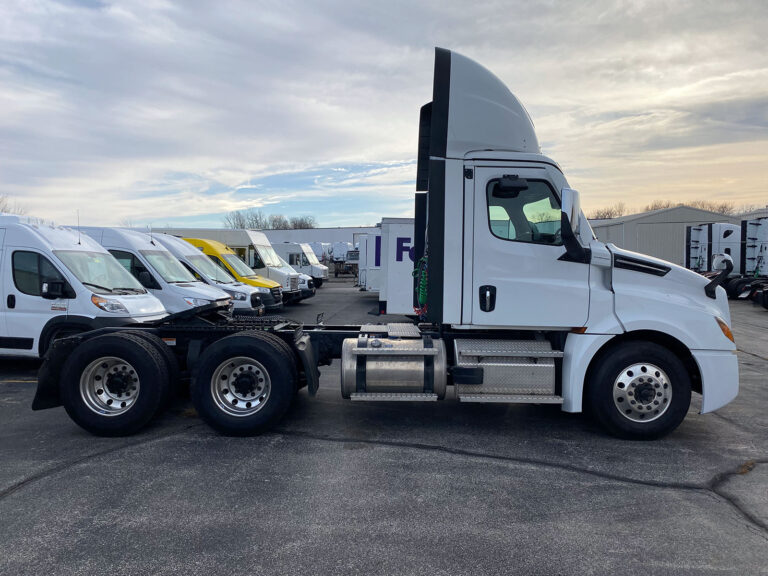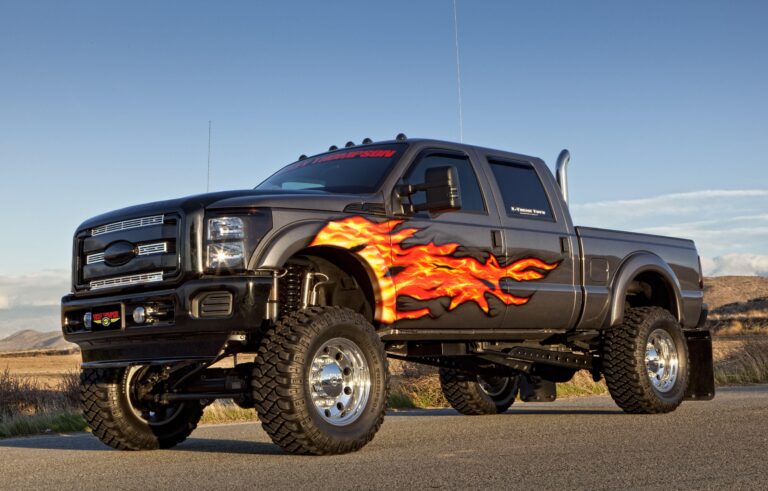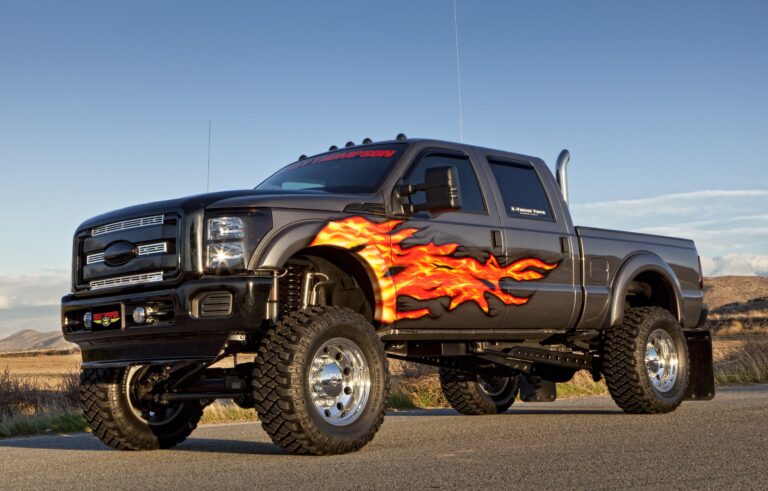New Heavy Duty Trucks For Sale: A Comprehensive Guide to Your Next Big Investment
New Heavy Duty Trucks For Sale: A Comprehensive Guide to Your Next Big Investment cars.truckstrend.com
The backbone of global commerce and industry, heavy-duty trucks are indispensable machines that power everything from cross-country logistics to critical construction projects. For businesses and owner-operators alike, the decision to invest in a new heavy-duty truck is a significant one, promising enhanced reliability, cutting-edge technology, and improved operational efficiency. This comprehensive guide delves into the world of new heavy-duty trucks for sale, offering insights, practical advice, and essential considerations to help you make an informed purchase.
Investing in a new heavy-duty truck is more than just acquiring a vehicle; it’s a strategic move to future-proof your operations, reduce downtime, meet stringent environmental regulations, and provide drivers with a safer, more comfortable working environment. From the roar of a powerful engine to the quiet hum of advanced telematics, new trucks represent the pinnacle of engineering designed to tackle the toughest jobs with unprecedented performance and economy.
New Heavy Duty Trucks For Sale: A Comprehensive Guide to Your Next Big Investment
Understanding Heavy Duty Trucks: Classes & Applications
Heavy-duty trucks are primarily categorized by their Gross Vehicle Weight Rating (GVWR), which indicates the maximum operating weight of the truck as specified by the manufacturer, including the vehicle’s chassis, body, engine, fuel, accessories, driver, passengers, and cargo. The two main classes within the heavy-duty segment are:
- Class 7 (GVWR: 26,001 – 33,000 lbs): These trucks often bridge the gap between medium and heavy-duty. Common applications include larger refuse trucks, single-unit dump trucks, city delivery trucks, large box trucks, and some smaller semi-tractors used for regional hauling. They offer significant payload capacity without the full scale of Class 8 vehicles.
- Class 8 (GVWR: 33,001 lbs and above): This is the segment most people associate with "big rigs." Class 8 trucks encompass the vast majority of tractor-trailers (semi-trucks), long-haul freight carriers, heavy-duty vocational trucks like concrete mixers, oversized dump trucks, severe-duty construction vehicles, and specialized heavy haulers. Their versatility and robust construction make them suitable for the most demanding tasks.
The choice between Class 7 and Class 8, and the specific configuration within each, hinges entirely on your intended application, typical load weights, route characteristics (long-haul vs. vocational), and regulatory requirements.

Key Benefits of Investing in New Heavy Duty Trucks
Opting for a new heavy-duty truck over a used one offers a myriad of advantages that can significantly impact your bottom line and operational efficiency:
- Unmatched Reliability & Warranty: New trucks come with full factory warranties, providing peace of mind against unexpected repairs and significantly reducing potential downtime. They offer peak performance from day one, minimizing maintenance needs in their early years.
- Cutting-Edge Technology & Safety: Modern heavy-duty trucks are equipped with advanced driver-assistance systems (ADAS) like collision mitigation, lane departure warning, adaptive cruise control, and blind-spot monitoring. Integrated telematics systems provide real-time data on performance, fuel efficiency, and driver behavior, optimizing operations.
- Superior Fuel Efficiency & Emissions Compliance: New engines are designed to meet the latest, strictest emissions standards (e.g., EPA 2021, CARB), which not only reduces environmental impact but also often translates to better fuel economy due to advanced engine management systems and aerodynamic designs.
- Enhanced Driver Comfort & Retention: Manufacturers are increasingly focusing on driver ergonomics, offering more spacious cabs, premium seating, advanced infotainment systems, and quieter interiors. A comfortable driver is a productive and safer driver, contributing to higher retention rates in a competitive industry.
- Favorable Financing & Customization: Lenders often offer better interest rates and terms for new equipment. Furthermore, purchasing new allows you to fully customize the truck to your exact specifications, from engine and transmission choices to axle configurations, interior layouts, and specialized vocational equipment.
- Higher Resale Value: While depreciation is a factor, a well-maintained new truck generally holds its value better than an older model, providing a stronger asset base for future fleet upgrades or sales.


Navigating the Purchase Process: Important Considerations
Acquiring a new heavy-duty truck requires careful planning and research. Here’s a step-by-step guide to ensure a successful purchase:
-
Define Your Exact Needs:
- Application: What will the truck primarily be used for (long-haul, regional delivery, construction, refuse, heavy haul, etc.)?
- Payload & Towing Capacity: What are the maximum weights you’ll be hauling? This determines the necessary GVWR, GCWR (Gross Combined Weight Rating), and axle ratings.
- Route Type: Will it operate on highways, urban streets, or off-road? This impacts suspension, tire choice, and driveline.
- Engine & Drivetrain: Consider horsepower and torque requirements for your loads and terrains. Research different transmission types (manual, automated manual, automatic) for efficiency and driver preference.
- Cab Style: Day cab, sleeper cab (various sizes), or specialized vocational cab.
- Aerodynamics: For long-haul operations, aerodynamic packages can significantly improve fuel efficiency.
-
Establish Your Budget & Explore Financing:
- Total Cost of Ownership (TCO): Look beyond the purchase price. Factor in fuel, maintenance, insurance, financing costs, tires, and potential driver wages.
- Financing Options: Explore various avenues like traditional bank loans, manufacturer financing programs, or leasing options. Leasing can offer lower monthly payments and flexibility, while purchasing builds equity.
- Down Payment & Interest Rates: A higher down payment can reduce overall interest paid. Shop around for competitive rates.
-
Research Manufacturers & Models:
- Familiarize yourself with major players like Freightliner, Kenworth, Peterbilt, Volvo, Mack, International, and Western Star. Each offers distinct strengths and models tailored for different applications.
- Read reviews, talk to other operators, and visit dealerships to see models in person.
-
Evaluate Dealer Reputation & Support:
- A strong dealer relationship is crucial. Assess their service department, parts availability, technician expertise, and responsiveness.
- Inquire about post-purchase support, training for new technologies, and roadside assistance programs.
-
Understand Warranty Details:
- Carefully review the terms of the manufacturer’s warranty, including duration, mileage limits, covered components (engine, transmission, axles), and any exclusions. Consider extended warranty options.
-
Test Drive (If Possible):
- For a semi-tractor, a test drive can provide valuable insight into driver comfort, visibility, handling, and the performance of specific engine/transmission combinations.
Top Manufacturers and Popular New Models
The heavy-duty truck market is dominated by several well-established manufacturers, each offering a diverse range of models tailored for specific applications:
- Freightliner: A market leader, known for fuel efficiency and advanced technology. Popular models include the Cascadia (long-haul, regional), M2 112 (vocational, regional), and SD series (severe duty).
- Kenworth: Renowned for quality, durability, and driver appeal. Key models are the T680 (aerodynamic long-haul), W900 (classic, vocational), and T880 (vocational, construction).
- Peterbilt: Often considered a premium brand, known for styling and robust performance. Models like the 579 (long-haul, aerodynamic), 389 (classic, vocational), and 567 (vocational, construction) are popular.
- Volvo Trucks: Emphasizes safety, fuel efficiency, and driver comfort. The VNL (long-haul) and VNR (regional haul) are prominent, along with vocational VHD series.
- Mack Trucks: Known for their ruggedness and vocational prowess. Popular models include the Anthem (highway), Granite (vocational, construction), and LR (refuse).
- International Trucks: Offers a broad range of applications with focus on uptime. The LT Series (long-haul) and HV Series (vocational) are key offerings.
- Western Star: Specializes in severe-duty and vocational applications. Models like the 4700 and 4900 are known for their strength and customizable options.
Tips for a Successful New Truck Purchase
- Don’t Rush: This is a major investment. Take your time to research, compare, and negotiate.
- Get Multiple Quotes: Contact several dealerships, even for the same manufacturer, to compare prices and financing offers.
- Consider Total Cost of Ownership (TCO): Focus on long-term costs, not just the upfront price. Fuel efficiency, maintenance schedules, and parts availability are critical.
- Future-Proofing: Think about your business’s growth. Do you anticipate needing more capacity or different capabilities in the next 5-10 years?
- Driver Input: If you have drivers, involve them in the decision-making process, especially regarding comfort and features. Their satisfaction directly impacts productivity.
- Leverage Technology: Ask about integrated telematics, predictive maintenance, and fleet management software that can optimize your operations.
Challenges and Solutions
While buying new offers many advantages, there can be challenges:
- High Initial Cost:
- Solution: Explore comprehensive financing options, manufacturer incentives, and consider leasing for lower upfront capital outlay. Some government programs offer grants for adopting cleaner technologies (e.g., electric trucks).
- Long Lead Times for Custom Orders:
- Solution: Plan your purchase well in advance. Place orders early, especially for highly customized configurations. Discuss current lead times with your dealer. Alternatively, inquire about dealer stock or trucks in transit that closely match your needs.
- Technological Complexity:
- Solution: Ensure the dealer provides thorough training on new systems (ADAS, telematics) for your drivers and maintenance staff. Invest in proper diagnostic tools and ensure your technicians are up-to-date.
- Finding the "Perfect" Spec:
- Solution: Work closely with a knowledgeable truck sales consultant. Provide them with detailed information about your operation, and they can help spec a truck that perfectly balances performance, efficiency, and cost.
Estimated Price Range for New Heavy Duty Trucks For Sale
The price of a new heavy-duty truck varies significantly based on its class, manufacturer, specific model, engine choice, axle configuration, interior amenities, and included technology packages. The figures below are estimates and can fluctuate widely with market conditions, customization, and dealer incentives.
| Truck Type/Class | Typical Application | Estimated Price Range (New USD) | Key Features (Examples) |
|---|---|---|---|
| Class 7 Vocational | Refuse, Medium Dump, Local Delivery, Large Box Trucks | $100,000 – $250,000+ | GVWR 26,001-33,000 lbs; Diesel or CNG engine; Automatic transmission; Specialized body mounts; Hydraulic systems; Shorter wheelbase for maneuverability; Driver-assist features. |
| Class 8 Regional Haul | Day Cab, Local/Regional Freight, Distribution | $120,000 – $200,000+ | GVWR 33,001+ lbs; Day cab (no sleeper); Aerodynamic design; Efficient diesel engine (350-450 HP); Automated manual transmission; Basic telematics; ADAS options. |
| Class 8 Long Haul (Sleeper) | Over-the-Road (OTR) Freight, Cross-Country Transport | $160,000 – $250,000+ | GVWR 33,001+ lbs; Integrated sleeper cab (mid-roof to high-roof); Aerodynamic package; Powerful diesel engine (400-600+ HP); Automated manual transmission; Advanced ADAS; Premium interior, infotainment, and climate control. |
| Class 8 Heavy Haul/Vocational | Severe-Duty Dump, Concrete Mixer, Logging, Specialized Haulers | $180,000 – $350,000+ | GVWR 33,001+ lbs (often much higher GCWR); Reinforced chassis; Heavy-duty axles; High-torque engine; Manual or heavy-duty automatic transmission; PTO capabilities; Off-road tires; Specialized body/equipment; Robust suspension. |
| Electric Heavy-Duty Truck | Regional/Drayage, Port Operations, Vocational (emerging) | $350,000 – $550,000+ | Zero emissions; Instant torque; Regenerative braking; Battery range (150-300+ miles); Charging infrastructure considerations; Government incentives may apply. |
Disclaimer: These are estimated ranges for new trucks. Actual prices can vary significantly based on specific configurations, optional features, market demand, dealer incentives, and the economic climate. It’s crucial to get a direct quote from a dealership for an accurate price.
Frequently Asked Questions (FAQ) About New Heavy Duty Trucks
Q1: What’s the typical lifespan of a new heavy-duty truck?
A1: With proper maintenance, a new heavy-duty truck (especially Class 8) can last well over 1,000,000 miles or 15-20 years. Engines often last 750,000 to 1,000,000 miles before needing major overhauls, while the chassis and components can endure even longer.
Q2: How do I finance a new heavy-duty truck?
A2: Common financing options include traditional bank loans, manufacturer financing programs (often with competitive rates), and leasing agreements. Leasing can offer lower monthly payments and off-balance-sheet financing, while purchasing builds equity. Many specialized truck financing companies also exist.
Q3: What’s the difference between GVWR and GCWR?
A3: GVWR (Gross Vehicle Weight Rating) is the maximum operating weight of the truck itself, including its own weight, fuel, driver, and cargo. GCWR (Gross Combined Weight Rating) is the maximum allowable weight of the truck (tractor) and its attached trailer(s) and their cargo combined.
Q4: Are electric heavy-duty trucks a viable option now?
A4: Yes, electric heavy-duty trucks are emerging rapidly, especially for regional haul, drayage, and some vocational applications. While their range and charging infrastructure are still developing, they offer significant fuel and maintenance savings, along with zero emissions. Manufacturers like Freightliner, Volvo, and Peterbilt offer electric models.
Q5: What kind of maintenance is required for new trucks?
A5: New trucks require adherence to the manufacturer’s preventative maintenance schedule, which typically includes regular oil changes, filter replacements (fuel, air, oil), fluid checks, tire inspections, brake checks, and diagnostics. Advanced telematics can help monitor truck health and predict maintenance needs.
Q6: How long does it take to get a custom-ordered truck?
A6: Lead times can vary significantly based on the manufacturer, model, customization level, and current demand. It can range from a few months to over a year. It’s crucial to discuss current lead times with your dealer when placing an order.
Conclusion
The acquisition of a new heavy-duty truck is a pivotal moment for any business involved in transportation or heavy industry. It represents an investment in reliability, efficiency, safety, and the future of your operations. By thoroughly understanding your needs, diligently researching the market, and carefully navigating the purchase process, you can secure a powerful asset that will drive your success for years to come. The future of trucking is here, characterized by innovation and performance, and a new heavy-duty truck puts you firmly in the driver’s seat.






